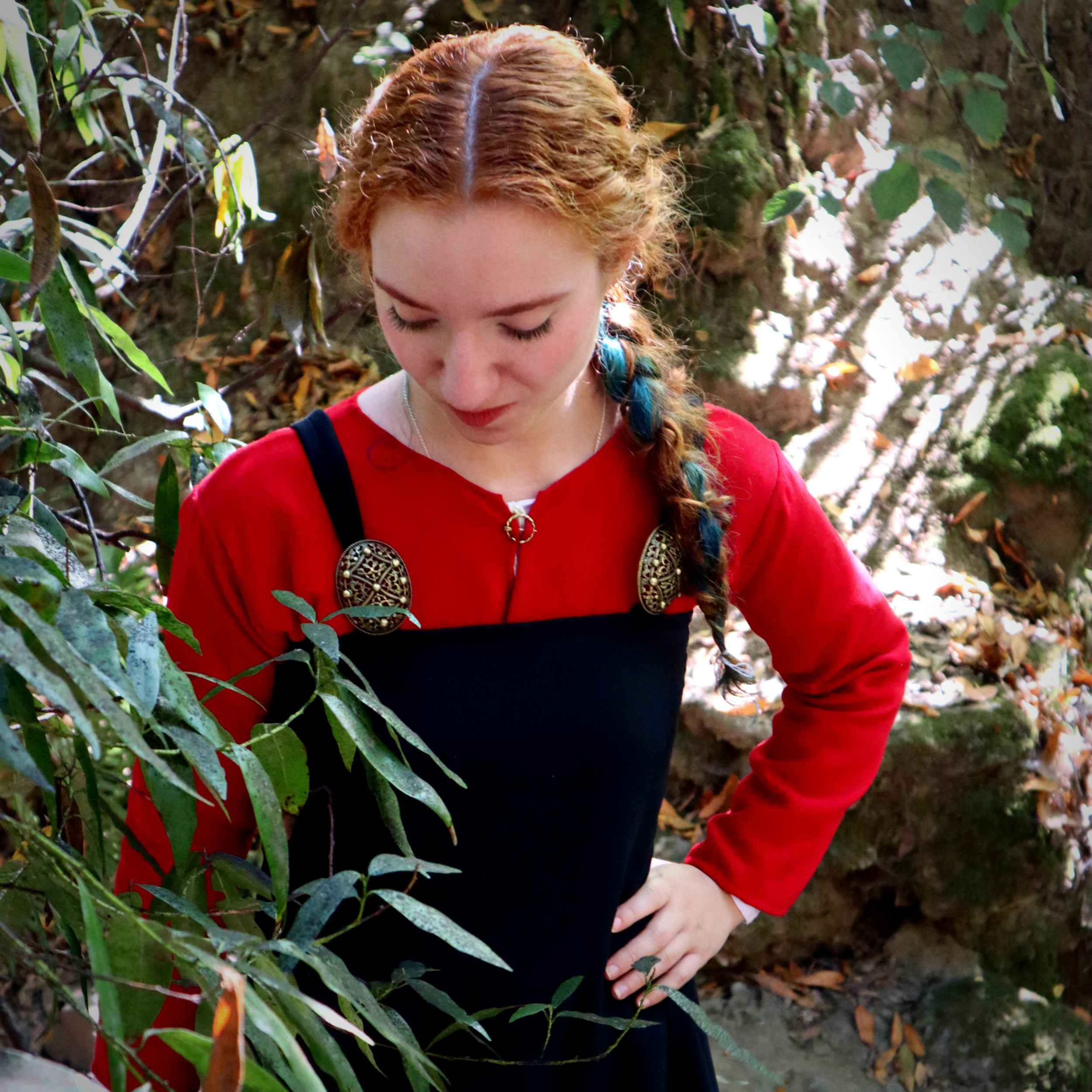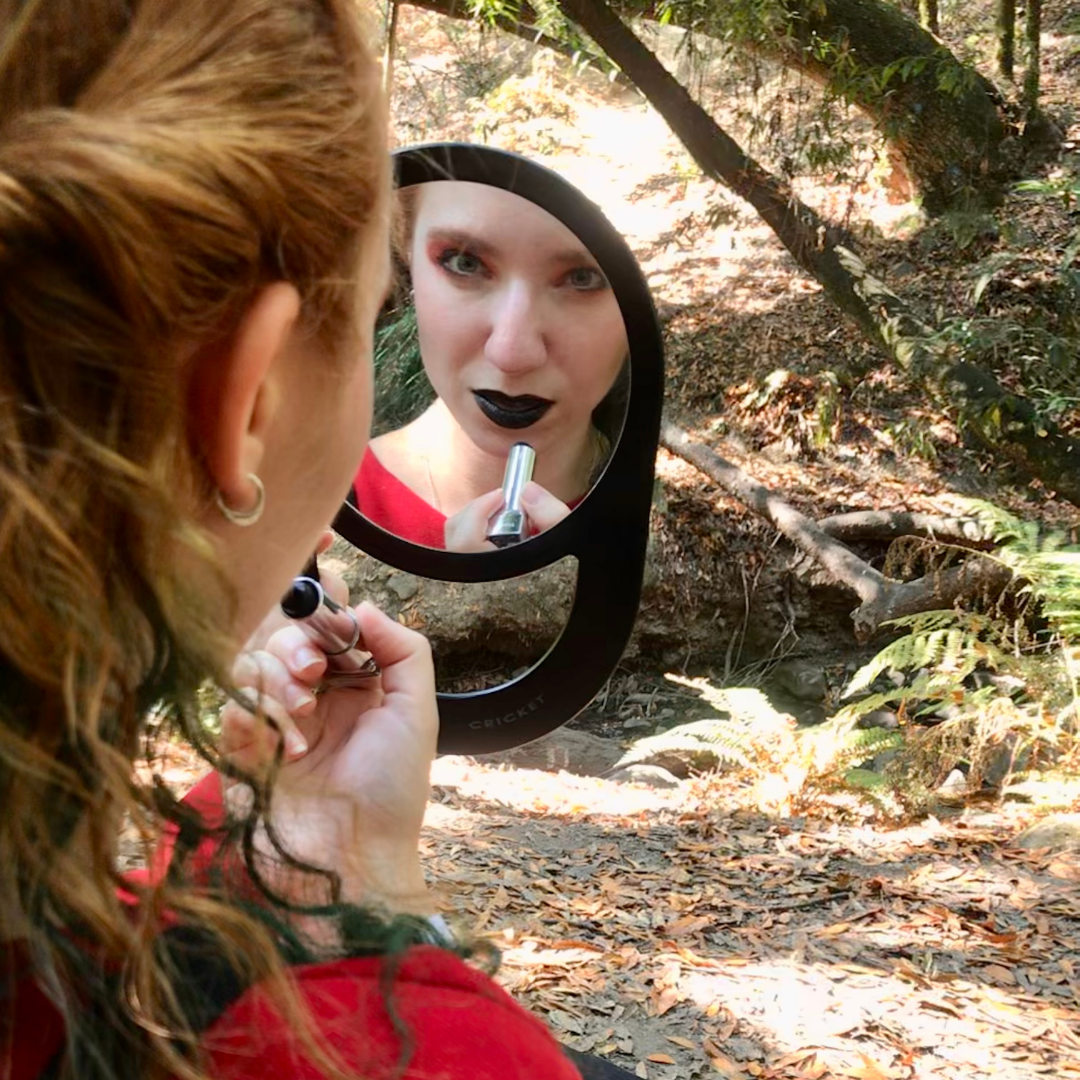What did Vikings wear, really? A historically accurate womens’ Viking costume
What did Vikings wear, really? A historically accurate womens’ Viking costume
What DID Vikings wear? Not the History Channel show costumes, but real, authentic, historically accurate Viking age womens clothing. The Viking age clothing we have is literally scraps, so the answer is . . . we don't know. But I'm gonna sew a Viking dress anyways, and talk about why historically accurate Viking clothing is a myth-- because there's so much we don't know about what the Vikings really wore.
Can a Viking outfit be truly “historically accurate”?
The authentic Viking clothing finds we have are nearly all from graves, which means they're not in good condition. Furthermore, the masculine clothes we have are in better condition, so we know even less about how to dress like a Viking woman. We believe Viking women wore linen smocks or underdresses, and sleeveless apron-dresses held up with the distinctive Viking brooches we might recognize. It's also possible they wore wool kirtles (regular medieval dresses), in between those two layers.
A historically adequate recreation
My Viking clothing includes a kirtle and apron-dress, both hand-sewn with materials common in the Viking era : linen thread, and wool fabric. A full list of all my historical sources and materials is available on my Patreon. While it's impossible to know for sure what historical Viking clothing looked like, my Viking age clothing should be good enough for any event I might go to-- and, good enough for me to enjoy wearing it, which is the important part.
-
[soft, mysterious Scandinavian fiddle music]
When I started this dress, I wanted to do something historically accurate.
I wanted to use the right materials, the right stitches, as though that made me a better costumer than if I used other methods.
I was completely wrong.
We know hardly anything about what Viking-age women wore. In the words of one of the many many blog posts I read, "It is generally agreed that Viking women wore clothing". Beyond that, most of what we have is scraps— literally. A lot of people have drawn completely different and conflicting conclusions about what garments even existed, so I'm going with . . . what makes the most sense to me.
I already have a linen smock or underdress, so my next layer will be a kirtle, or dress, in this lightweight red wool. Whether Viking-age women wore kirtles is a subject of intense debate, because in many of the graves we've found, there are only scraps of a linen smock, and of an "apron-dress", which looks kind of like a tank dress. Much of the rest of Europe had kirtles, though, even places considerably warmer than Scandinavia. Also, a relatively recent analysis of grave finds from Birka— too recent to be written up in English, so I'm going off of translated quotes from various blogs— concludes that we do have evidence for kirtles worn between the smock and the apron-dress. I compile all my research notes on my Patreon, so if that interests you, there's a link in the description.
We have identified fragments of wool twill in Viking grave finds, and, yes, some of it was red. Is this the same shade of red as they would have had? Probably not, this is almost certainly dyed with modern aniline dyes instead of natural dyes. But as someone with a limited budget— and no interest in dyeing all my own wool— my color choices are usually based on "what do the fabric stores have in this week?". Natural, historical dyes are great, if you have the time and budget for that, but I just don't. Even if I did, and even if I could hand-weave my fabric on period-accurate looms . . . our 21st-century sheep are different than Viking-age sheep, and produce different wool. We have no choice but to accept that it's impossible to create a totally perfect historical reproduction, so from there? It's up to you. Set your own goals, and as long as you're honest about what they are, no one has the right to judge you for them. I'm not an academic, I'm not a historian, I'm just a woman who likes frolicking in really old dresses . . . and for most of my projects, I draw the line at dyestuffs.
The cut of the kirtle can't really be called "historically accurate" either. In addition to the lack of textile finds, much of the art from this time and area isn't detailed enough to show how a dress is cut. Looking at this pendant, we can see a shawl or cloak, some kind of long dress, and some sort of detail around knee-height, but that's it. The pattern and cut is extrapolated from kirtles in other parts of Europe, and from masculine garments that were found in more complete condition. It's a simple, geometric cut using only rectangles and triangles, so hardly any fabric is wasted. The sleeves are rectangles, tapered slightly at the wrist, and have a square gusset under the arm for movement. The body is two long rectangles sewn together at the shoulders, and the skirt has four triangular gores set into it; one in each sideseam, and one each at center front and center back. The whole thing is sewn using linen thread in undyed gray for construction seams, which would be cheaper. More expensive dyed thread is used for felling the seam allowances down, or anywhere else it might show. Let me know in the comments if you'd like a more in-depth video on this style of kirtle! Another thing that's been found, although the meaning is debated, are small brooches in the neckline area in grave finds. Keyhole necklines closed with small brooches seemed to exist elsewhere in Europe around this time, and since I plan to use this kirtle in all sorts of medieval outfits, that's what I'll go with.
We know a little more about Viking-age "apron-dresses" than we do about their kirtles, if only in that everyone seems to agree that they existed. We know they were sleeveless, kind of like tank-dresses, and fastened at the front shoulder with decorative brooches. From there, it varies a lot. They could have pleating or smocking— my dear friend Courtney of Opus Elenae made a wonderful apron-dress based on the Kostrup find earlier this year, which is shaped by pleating. Some had seams that indicate darts or tailoring or some kind of shaping. We also haven't found any pieces of one big enough to indicate how long they were. Maybe they were full-length, or maybe that's what this bit of detail around knee level is, some kind of hem decoration. When we were nerding out about Viking things, Courtney sent me a pattern diagram that incorporates the seamed body construction, has a very full twirly skirt, and can be cut out of quite a small amount of fabric. There are three body panels with flared skirts, and three triangular gores to widen the skirt further. The material is, again, chosen based on what the fabric stores had in stock : a lightweight black wool twill. The finished apron-dress will be a little below knee-length, because that way I can cut it out on the cross-grain and only use a yard of fabric for my tiny self. The pattern is definitely conjectural. How could a reconstruction of such small scraps be anything else? But it makes good use of the material evidence we have, as well as what we know more broadly about rectangular cutting and avoiding fabric waste. Good enough for me, and, it'll be fun to twirl in.
I'm once again sewing with waxed, undyed linen thread, using running-backstitches in areas that won't take much strain. One of the three gores is cut in two halves, as is one of the three body pieces, so I'll sew those together before I do anything else.
When I say this pattern is conjectural, I want to explain what I mean. We actually have a pretty impressive amount of archaeological evidence for what life in Viking-age Scandinavia was like, though, much like the textile finds, it's full of holes. So we can certainly make use of what evidence we do have, and if that's your goal, that's great! But there are such huge gaps in our knowledge that even our idea of historical accuracy is kinda questionable. I think the Kostrup apron-dress fragment is only 10 by 4 inches at its biggest dimensions, which means the other however-many square inches of that apron-dress are all guesswork. How can we talk about "historical accuracy" as an absolute, when we are working from so little? What we've found leaves us with more questions than it answers, and what we don't know vastly outweighs what we do. How can we judge our fellow costumers on things that archaeologists disagree about? And even if we did have a more concrete idea of what Viking-age dresses were like, who's to say "historical accuracy" is every costumer's goal? Why should it be? In the push to be as accurate as possible, it's easy to lose sight of all the different things that bring people into this hobby.
One of the few things we have solid evidence for are the closures, because the large brooches the apron-dresses were fastened with preserved fabric near them which would have otherwise decomposed. Instead of stabbing the brooch through the garment, small loops were used as straps. These have been found in various materials and configurations— sometimes two, sometimes four, often linen but sometimes wool. The straps were made of strips folded like modern double-fold binding, so that's how I'm making them. Important disclaimer, do not put your iron down like this unless you know it's safe. The two front loops are teeny-tiny, the back ones are long enough to go over my shoulders. Everything is turned inward and "oversewn", or whip-stitched, into place.
[dark, intense Scandinavian fiddle music]
Both normal and Viking Metal V hope you enjoyed watching as much as I enjoyed making this dress! Tell me your thoughts on the idea of "historical accuracy” in the comments, don’t forget to click the like button, and subscribe for more historically adequate costuming videos. Also, check out my Patreon for behind-the-scenes content, research notes, and monthly video chat sewing circles! Until next time— remember that what makes a "good" costume is different for everyone, and our little corner of the world is better for it.



